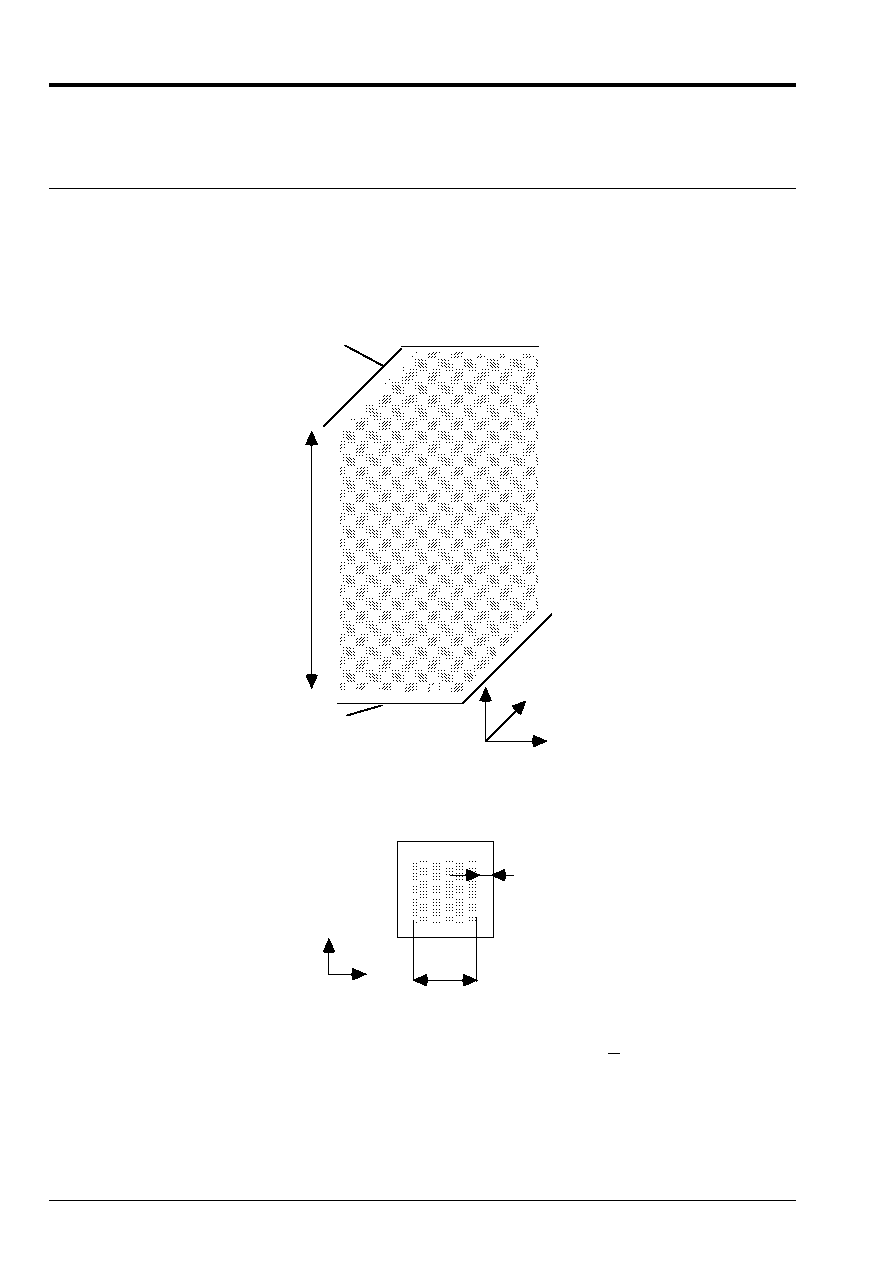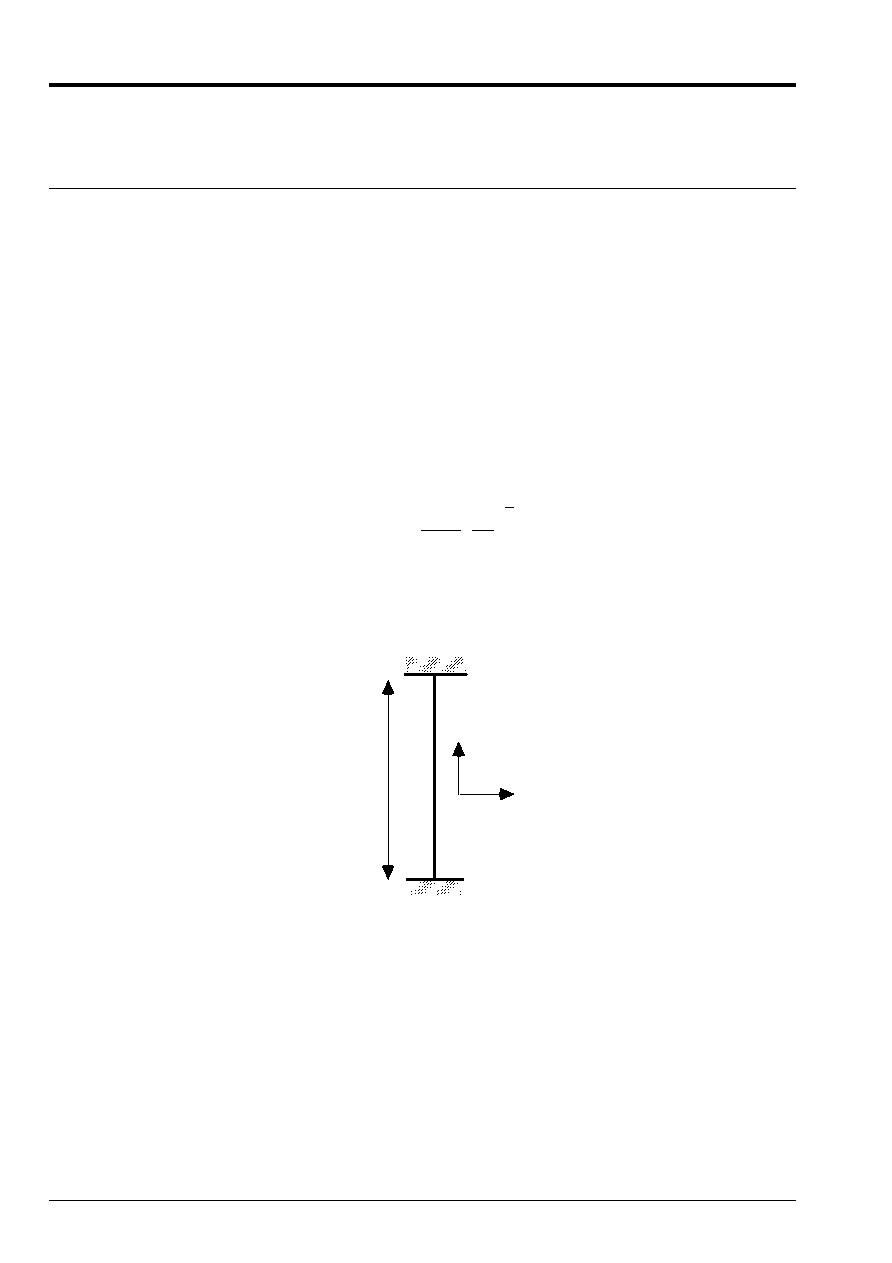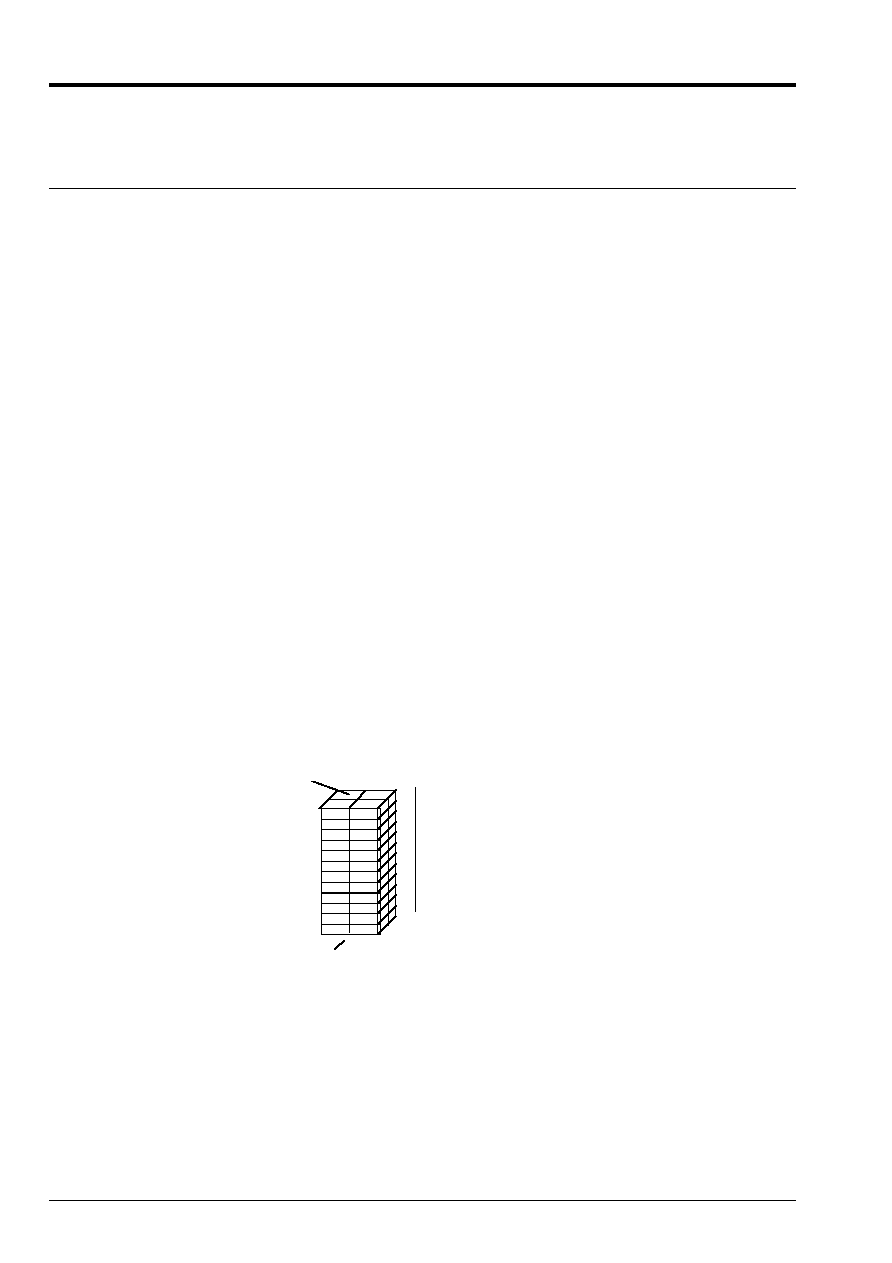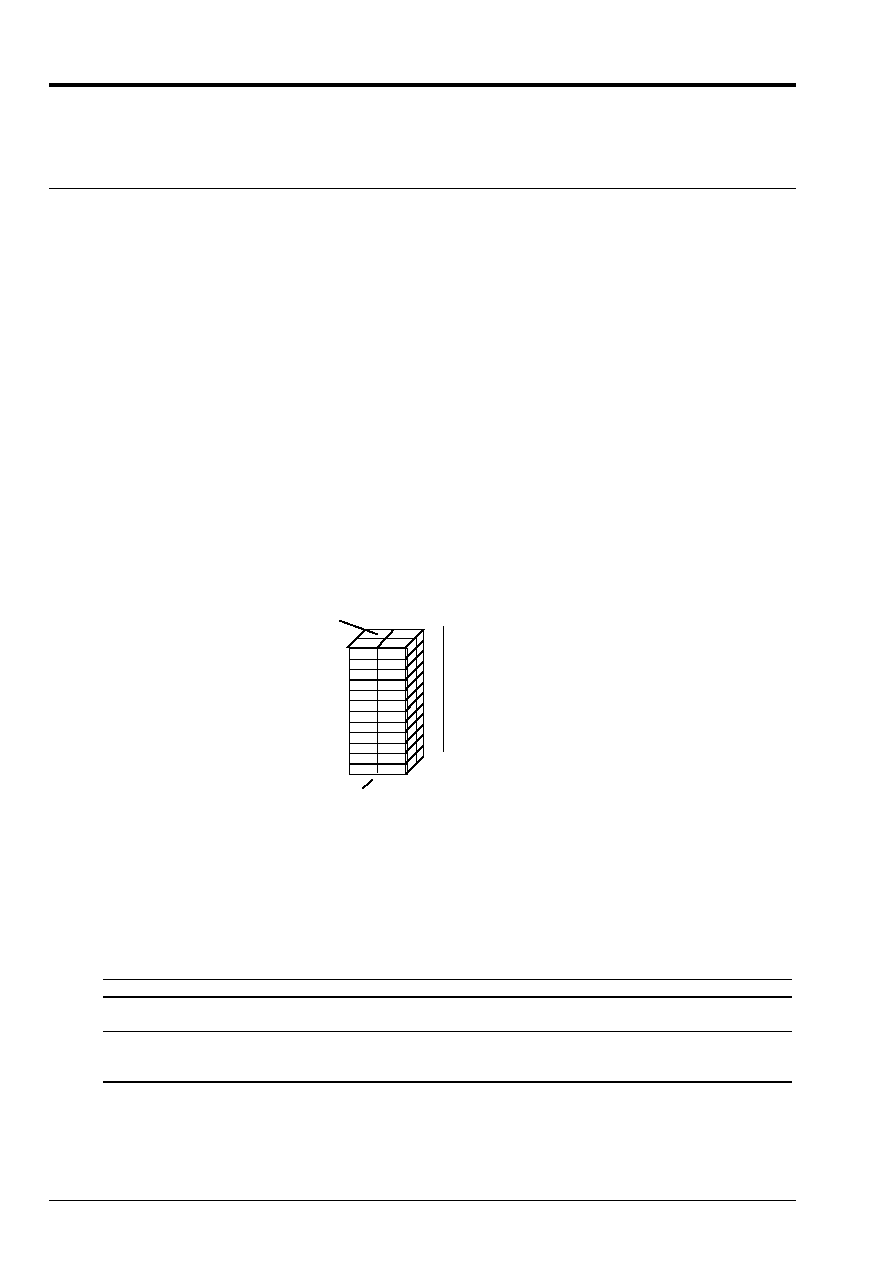
Code_Aster
®
Version
4.0
Titrate:
SDLV111 Homogenization of a network of beams
Date:
08/01/98
Author (S):
B. QUINNEZ, H. HADDAR
Key:
V2.04.111-A
Page:
1/10
Manual of Validation
V2.04 booklet: Linear dynamics of the voluminal structures
HI-75/96/052 - Ind A
Organization (S):
EDF/IMA/MN
Manual of Validation
V2.04 booklet: Linear dynamics of the voluminal structures
V2.04.111 document
SDLV111 - Homogenization of a network
beams in an incompressible fluid
Summary:
Test in modal analysis, being used to validate the elements of modeling
3d_FAISCEAU
: hexahedron with 8 nodes
or hexahedron with 20 nodes. These elements represent the homogenized medium of a bathing network of beams
in an incompressible fluid, initially at rest.
One tests the Eigen frequencies of the beams of the medium homogenized without or with fluid.

Code_Aster
®
Version
4.0
Titrate:
SDLV111 Homogenization of a network of beams
Date:
08/01/98
Author (S):
B. QUINNEZ, H. HADDAR
Key:
V2.04.111-A
Page:
2/10
Manual of Validation
V2.04 booklet: Linear dynamics of the voluminal structures
HI-75/96/052 - Ind A
1
Problem of reference
1.1 Geometry
One considers a periodic network of 4 X 4 beams [1.1-a]. The period of the field is
Y.
appear [1.1-b] represents an enlarging of 1/
period. Each beam is right of
square section.
L
Surface top: HS
Surface bottom: Sb
y
X
Z
Appear 1.1-a: Geometry of the heterogeneous medium - Beams without fluid
Y1
Y2
has
E
Appear 1.1-b: Airframe of reference Y - Enlarging of
1
= 10
·
Characteristics of the period:
- Dimensions
:
Y = (0.21 m, 0.21 m)
= 1.5 m have
E = 0.3 m

Code_Aster
®
Version
4.0
Titrate:
SDLV111 Homogenization of a network of beams
Date:
08/01/98
Author (S):
B. QUINNEZ, H. HADDAR
Key:
V2.04.111-A
Page:
3/10
Manual of Validation
V2.04 booklet: Linear dynamics of the voluminal structures
HI-75/96/052 - Ind A
·
Characteristics of each beam:
- Section
:
With = (
X has)
2
= (0.1 X 1.5)
2
= 0.0225 m
2
- Length
:
L = 4.1 m
-
Moment of inertia of bending:
I
X
= I
y
= (
X has)
4
/12 m
4
1.2
Material properties
Isotropic linear elastic material:
E = 10
9
AP
NAKED = 0.3
Densities:
Beam:
Rho = 7641 kg/m
3
Fluid:
Rho = 0 kg/m
3
(case without fluid)
Rho = 1000 kg/m
3
(case with fluid)
1.3 Terms
correctors
The correct terms are calculated on the airframe of reference Y [1.1-b].
B_T
=
0.79 m
2
B_N
=
0.79 m
2
B_TN
=
0 m
2
A_FLUI
=
2.16 m
2
A_CELL
=
2.25 m
2
COEF_ECHELLE
=
10
1.4
Boundary conditions and loadings
Case without fluid:
Surface low Sb: embedding
All the DDL are locked.
Surface high HS: embedding
All the DDL are locked.
Case with fluid:
Surface low Sb: embedding
All the DDL are locked.
Surface high HS: plane support (bilateral connection)
All rotations are locked.
Longitudinal displacement DZ is locked.
All the nodes of HS have same transverse displacement DX and same normal displacement
DY.

Code_Aster
®
Version
4.0
Titrate:
SDLV111 Homogenization of a network of beams
Date:
08/01/98
Author (S):
B. QUINNEZ, H. HADDAR
Key:
V2.04.111-A
Page:
4/10
Manual of Validation
V2.04 booklet: Linear dynamics of the voluminal structures
HI-75/96/052 - Ind A
2
Reference solution
2.1
Method of calculation used for the reference solution
Case without fluid:
Let us consider the heterogeneous field described with [§1] in absence of the fluid. It is supposed that the beams
respect the assumptions of modeling of a right beam of Euler Bernoulli. Since conditions
in extreme cases applied to the whole of the beams are the same ones as for each one of them, one
can bring back the search of the Eigen frequencies of the unit to that of only one beam.
The following problem is thus studied:
That is to say a beam Bi embedded [2.1-a] in the same way characteristic geometrical and material that them
beams of the heterogeneous medium. One notes A the surface of the section, L his length, and I the moment of inertia of
bending.
By the method of rigidity dynamic one shows that such a beam admits frequencies double
the form:
F
I
=
i2
2
L
2
I.E.(internal excitation)
With
1
2
I
=
(2i
+
1)
/2
I
=
1, 2,….
for the second case of boundary conditions: [2.1-a].
X
Z
L
Embedding
Embedding
Appear 2.1-a
The field contains NR beams independent between them (not of boundary conditions which couples
displacements of two different beams), It results from it that the multiplicity of the frequencies is equal
with 2N (2 modes of bendings by beams).
For the homogenized medium discretized by the finite elements hexahedron with 8 nodes or hexahedron with 20
nodes, the number NR must be replaced by the number of straight lines parallel with the axis of the beams.
Case with fluid:
The case with fluid is more difficult to solve analytically: no analytical result was found
until the drafting of this case test. The results of reference which one has benches thus come from one
numerical resolution by finite elements of the complete heterogeneous problem. One used for this fact
version 3.6.2 of
Code_Aster
.

Code_Aster
®
Version
4.0
Titrate:
SDLV111 Homogenization of a network of beams
Date:
08/01/98
Author (S):
B. QUINNEZ, H. HADDAR
Key:
V2.04.111-A
Page:
5/10
Manual of Validation
V2.04 booklet: Linear dynamics of the voluminal structures
HI-75/96/052 - Ind A
Each beam is represented in the mesh by its average fiber modelized by
POU_D_E
(beam
straight line of Euler). For all the beams, one binds each node of average fiber to the nodes of
side surface, located in the same transverse section as the node in question, by
LIAISON_SOLIDE
. The fluid interface beam is modelized by
FLUI_STRU
who translates the continuity of
normal speeds with the walls. The fluid, was to be perfect incompressible, one deduced his modeling
of that of the compressible true fluid
3d_FLUIDE
by removing the contribution of the pressure.
Boundary conditions imposed on the fields [§1.3], and especially the relation which couples it
displacement of all the beams on the level of HS, reveal two kinds of clean modes of
the structure:
Modes of assemblies: all the beams become deformed in the same way and top surfaces it
a displacement not no one admits.
Local modes: they correspond to modes of embed-embedded beams.
surfaces top thus admits a null displacement. None of these modes can correspond to
an overall mode.
The action of the fluid results in an effect of added mass and thus a lowering of the frequencies by
report/ratio with the case without fluid. It also causes, in the case of the local modes, to spread out the spectrum of
associated frequencies. In the case without fluid one saw that this spectrum was concentrated in only one
frequency of vibration.
2.2
Results of reference
Value of the Eigen frequencies.
2.3 References
bibliographical
[1]
Walter D. Pilkey: “Formulated for Stress, Strain and Structural Matrices”, A Wiley-Interscience
Publication JOHN WILEY & SOUNDS, Inc. Edition 1994.

Code_Aster
®
Version
4.0
Titrate:
SDLV111 Homogenization of a network of beams
Date:
08/01/98
Author (S):
B. QUINNEZ, H. HADDAR
Key:
V2.04.111-A
Page:
6/10
Manual of Validation
V2.04 booklet: Linear dynamics of the voluminal structures
HI-75/96/052 - Ind A
3 Modeling
With
3.1
Characteristics of modeling
Modeling
3d_FAISCEAU
Boundary conditions:
Case without fluid:
DDL_IMPO:(
GROUP_MA: Sb DX: 0
DY: 0
DZ: 0
DRX: 0 DRY: 0 DRZ: 0
GROUP_MA: HS DX: 0
DY: 0
DZ: 0
DRX: 0 DRY: 0 DRZ: 0
N1 NODE: PHI: 0
)
Case with fluid:
DDL_IMPO: (
GROUP_MA: Sb DX: 0
DY: 0
DZ: 0
DRX: 0 DRY: 0 DRZ: 0
GROUP_MA: HS DZ: 0
DRX: 0 DRY: 0 DRZ: 0
N1 NODE: PHI: 0
)
LIAISON_UNIF: (GROUP_MA: HS
DDL: “DX”)
LIAISON_UNIF: (GROUP_MA: HS
DDL: “DY”)
3.2
Characteristics of the mesh
Mesh of the homogenized medium used, for the two cases of figure: with or without fluid, is
represented by [3.2-a].
It comprises 48 meshs HEXA8.
The mesh contains 9 straight lines parallel with average fiber of each beam.
12
meshs
in
height
4 meshs in cross section
HS
Sb
Appear 3.2-a: mesh

Code_Aster
®
Version
4.0
Titrate:
SDLV111 Homogenization of a network of beams
Date:
08/01/98
Author (S):
B. QUINNEZ, H. HADDAR
Key:
V2.04.111-A
Page:
7/10
Manual of Validation
V2.04 booklet: Linear dynamics of the voluminal structures
HI-75/96/052 - Ind A
3.3 Functionalities
tested
Case without fluid:
Controls
Keys
AFFE_MODELE
3d_FAISCEAU
[U4.22.01]
AFFE_CHAR_MECA
DDL_IMPO
[U4.25.05]
AFFE_CARA_ELEM
BEAM
SECTION:
“RIGHT-ANGLED”
[U4.24.01]
ORIENTATION
ANGL_NAUT
POUTRE_FLUI
MODE_ITER_SIMULT
METHOD
“TRI_DIAG”
[U4.52.02]
CALC_FREQ
OPTION:
“TAPE”
Case with fluid:
Controls
Keys
AFFE_MODELE
3d_FAISCEAU
[U4.22.01]
AFFE_CHAR_MECA
DDL_IMPO
[U4.25.01]
LIAISON_UNIF
AFFE_CARA_ELEM
BEAM
SECTION:
“RIGHT-ANGLED”
[U4.24.01]
ORIENTATION
ANGL_NAUT
POUTRE_FLUI
MODE_ITER_SIMULT
METHOD
“TRI_DIAG”
[U4.52.02]
CALC_FREQ
OPTION:
“TAPE”
4
Results of modeling A
4.1 Values
tested
Case without fluid:
Number
of command
Size and
unit
Reference
Aster
% difference
1, 2 and 6
frequency (Hz)
3.3333
3.3183
0.45%
19 and 20
frequency (Hz)
9.2584
9.1480
1.19%
Case with fluid:
Number
of command
Size and
unit
Reference
Aster
% difference
1 and 2
frequency (Hz)
0.6908
0.6932
0.35%
19 and 20
frequency (Hz)
3.7871
3.7984
0.30%
4.2 Parameters
of execution
Version: 3.6.2
Machine: CRAY C90
Overall dimension memory:
16 MW
Time CPU To use:
100 S

Code_Aster
®
Version
4.0
Titrate:
SDLV111 Homogenization of a network of beams
Date:
08/01/98
Author (S):
B. QUINNEZ, H. HADDAR
Key:
V2.04.111-A
Page:
8/10
Manual of Validation
V2.04 booklet: Linear dynamics of the voluminal structures
HI-75/96/052 - Ind A
5 Modeling
B
5.1
Characteristics of modeling
Modeling
3d_FAISCEAU
Boundary conditions:
Case with fluid:
DDL_IMPO: (
GROUP_MA: Sb DX: 0
DY: 0
DZ: 0
DRX: 0 DRY: 0 DRZ: 0
GROUP_MA: HS DZ: 0
DRX: 0 DRY: 0 DRZ: 0
N1 NODE: PHI: 0
)
LIAISON_UNIF: (GROUP_MA: HS
DDL: “DX”)
LIAISON_UNIF: (GROUP_MA: HS
DDL: “DY”)
5.2
Characteristics of the mesh
Mesh of the homogenized medium used, for the two cases of figures: with or without fluid, is
represented by [5.2-a].
It comprises 48 meshs HEXA20.
The mesh contains 9 straight lines parallel with average fiber of each beam.
12
meshs
in
height
4 meshs in section
HS
Sb
Appear 5.2-a: mesh
5.3 Functionalities
tested
Case with fluid:
Controls
Keys
AFFE_MODELE
3d_FAISCEAU
[U4.22.01]
AFFE_CHAR_MECA
DDL_IMPO
[U4.25.01]
LIAISON_UNIF
AFFE_CARA_ELEM
BEAM
SECTION:
“RIGHT-ANGLED”
[U4.24.01]
ORIENTATION
ANGL_NAUT
POUTRE_FLUI
MODE_ITER_SIMULT
METHOD
“TRI_DIAG”
[U4.52.02]
CALC_FREQ
OPTION:
“TAPE”

Code_Aster
®
Version
4.0
Titrate:
SDLV111 Homogenization of a network of beams
Date:
08/01/98
Author (S):
B. QUINNEZ, H. HADDAR
Key:
V2.04.111-A
Page:
9/10
Manual of Validation
V2.04 booklet: Linear dynamics of the voluminal structures
HI-75/96/052 - Ind A
6
Results of modeling B
6.1 Values
tested
Case with fluid:
Number
of command
Size and
unit
Reference
Aster
% difference
1 and 2
frequency (Hz)
0.6908
0.6932
0.35%
19 and 20
frequency (Hz)
3.7871
3.7984
0.23%
6.2 Parameters
of execution
Version: 3.6.2
Machine: CRAY C90
Overall dimension memory:
16 MW
Time CPU To use:
100 S

Code_Aster
®
Version
4.0
Titrate:
SDLV111 Homogenization of a network of beams
Date:
08/01/98
Author (S):
B. QUINNEZ, H. HADDAR
Key:
V2.04.111-A
Page:
10/10
Manual of Validation
V2.04 booklet: Linear dynamics of the voluminal structures
HI-75/96/052 - Ind A
7
Summary of the results
The results show the good modal behavior of the elements of modeling
3d_FAISCEAU
in bending, absence of the fluid. It show also a very good agreement of the frequencies of the modes
overall with calculation
Aster
into heterogeneous, when there is fluid.
For the frequencies of the overall modes, one does not observe differences between a mesh HEXA8
and HEXA20 (this is not true for the other modes).










